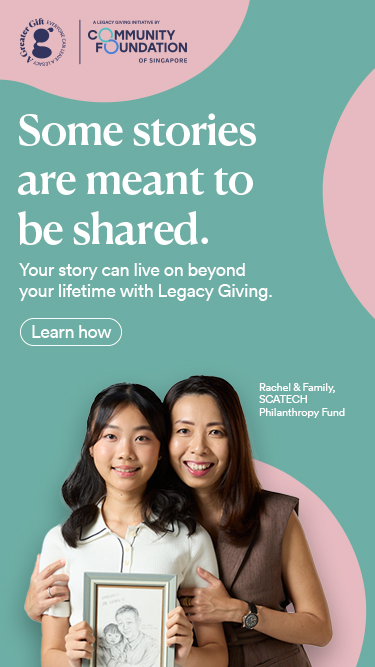Bank of Singapore partners Community Foundation of Singapore to provide clients with philanthropy services


Bank of Singapore, the private banking subsidiary of OCBC Bank, has partnered with non-profit organisation Community Foundation of Singapore (CFS) to provide its clients with philanthropic services.
With this partnership, CFS will work with the bank’s clients to translate their interests, values and goals into philanthropic strategies that meet giving goals of the clients and match the needs of the local community. To develop these strategic giving plans, CFS will use insights from its Charities and Grants team and consult its philanthropy advisors.
In a press release on Monday (May 23), Bank of Singapore stated that the partnership comes at an “opportune time” as philanthropic activities amongst ultra-high and high net worth individuals are on the rise.
Headquartered in Singapore, the bank serves high net worth individuals and wealthy families markets of Southeast Asia, Greater China, Philippines, India Sub-Continent and other international markets.
Based on statistics from Knight Frank, 54 per cent of global family offices, a strategic client segment that the bank is focused on building, were increasing their philanthropic activity in 2021.
Bahren Shaari, chief executive officer of Bank of Singapore, believes that CFS’ expertise and insights into Singapore’s charitable landscape will help the bank’s clients to map out charitable-giving goals that align with their values and ambitions.
This article was originally published in The Business Times here. Source: The Business Times © SPH Media Limited. Permission required for reproduction.
Bank of Singapore, the private banking subsidiary of OCBC Bank, has partnered with non-profit organisation Community Foundation of Singapore (CFS) to provide its clients with philanthropic services.
With this partnership, CFS will work with the bank’s clients to translate their interests, values and goals into philanthropic strategies that meet giving goals of the clients and match the needs of the local community. To develop these strategic giving plans, CFS will use insights from its Charities and Grants team and consult its philanthropy advisors.
In a press release on Monday (May 23), Bank of Singapore stated that the partnership comes at an “opportune time” as philanthropic activities amongst ultra-high and high net worth individuals are on the rise.
Headquartered in Singapore, the bank serves high net worth individuals and wealthy families markets of Southeast Asia, Greater China, Philippines, India Sub-Continent and other international markets.
Based on statistics from Knight Frank, 54 per cent of global family offices, a strategic client segment that the bank is focused on building, were increasing their philanthropic activity in 2021.
Bahren Shaari, chief executive officer of Bank of Singapore, believes that CFS’ expertise and insights into Singapore’s charitable landscape will help the bank’s clients to map out charitable-giving goals that align with their values and ambitions.
This article was originally published in The Business Times here. Source: The Business Times © SPH Media Limited. Permission required for reproduction.
- Related Topics For You: DONOR-ADVISED FUND, NEWS, PARTNERSHIP STORIES

.jpg)

